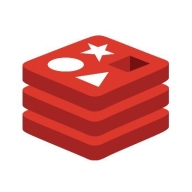

Redis and Neo4j AuraDB compete in the database solutions category, each addressing unique data management requirements. Redis tends to have the upper hand in performance and scalability, while Neo4j AuraDB excels in handling complex relationships and graph data.
Features: Redis is favored for its fast data processing, in-memory storage, and support for various data structures like strings, hashes, and sets, making it effective for caching, real-time analytics, and session management. Neo4j AuraDB shines in its graph database capabilities, supporting advanced graph algorithms and facilitating complex relationship queries, benefiting applications focused on connectivity and network dynamics.
Room for Improvement: Redis could expand its on-disk storage options and improve handling of more complex data structures beyond real-time processing. Neo4j AuraDB would benefit from simplified schema design, more user-friendly query interfaces, and improved integration with diverse data sources.
Ease of Deployment and Customer Service: Redis is praised for its straightforward setup and supportive community, enabling rapid deployment and technical assistance. Neo4j AuraDB's managed service simplifies deployment but requires more specialized knowledge in schema design. Both feature strong support, with Redis noted for simplicity and faster deployment.
Pricing and ROI: Redis offers low setup costs and substantial ROI due to its open-source nature and efficient resource use, with more affordable scalability. Neo4j AuraDB requires higher initial investment, but provides significant ROI for projects leveraging its graph capabilities, offering value through advanced analytics that justify higher expenses for specific use cases.
| Product | Market Share (%) |
|---|---|
| Neo4j AuraDB | 5.2% |
| Redis | 3.1% |
| Other | 91.7% |


| Company Size | Count |
|---|---|
| Small Business | 4 |
| Midsize Enterprise | 2 |
| Large Enterprise | 1 |
| Company Size | Count |
|---|---|
| Small Business | 11 |
| Midsize Enterprise | 3 |
| Large Enterprise | 8 |
Neo4j AuraDB offers seamless integration with Python, Java, and Go, efficiently handles real-time data, and is hosted on AWS Cloud for reliable, scalable, and multi-cloud support across GCP, Azure, and Amazon.
Neo4j AuraDB is appreciated for its flexible data models and dedicated query language, ideal for network correlation and graph analysis. It provides scalability with expanded memory and supports multiple databases. While users enjoy its speed and AI data handling capabilities, challenges include stability, with occasional crashes and a need for a more intuitive cloud interface. Enhancements in simplifying the development process and improving the Bloom interface for large datasets are desired. Although documentation is positive, it could be streamlined. Scalability in large projects is a recurring concern alongside a more user-friendly setup for less experienced teams.
What are Neo4j AuraDB's standout features?Research teams use Neo4j AuraDB to learn cipher language and gather data from platforms like Hacker News. It is vital for graph data access, participant engagement, and projects like connecting food data or investment insights. Companies needing scalable cloud interfaces and swift data analysis in generative AI contexts benefit significantly, achieving effective data point connection with robust documentation.
Redis offers high-speed, in-memory storage, renowned for real-time performance. It supports quick data retrieval and is used commonly in applications like analytics and gaming.
Renowned for real-time performance, Redis delivers high-speed in-memory storage, making it a favorite for applications needing quick data retrieval. Its diverse data structures and caching capabilities support a broad array of use cases, including analytics and gaming. Redis ensures robust scalability with master-slave replication and clustering, while its publish/subscribe pattern renders it reliable for event-driven applications. The solution integrates smoothly with existing systems, minimizing performance tuning needs. Although documentation on scalability and security could be improved, Redis remains cost-effective and stable, commonly utilized in cloud environments. Enhancing integration with cloud services like AWS and Google Cloud and refining GUI may improve usability.
What are the key features of Redis?Redis finds application across industries for tasks like caching to improve application performance and speed, minimizing database load. It enables real-time processing for session storage, push notifications, and analytics. As a messaging platform, Redis handles high traffic and supports replication and clustering for cross-platform scalability.
We monitor all Managed NoSQL Databases reviews to prevent fraudulent reviews and keep review quality high. We do not post reviews by company employees or direct competitors. We validate each review for authenticity via cross-reference with LinkedIn, and personal follow-up with the reviewer when necessary.